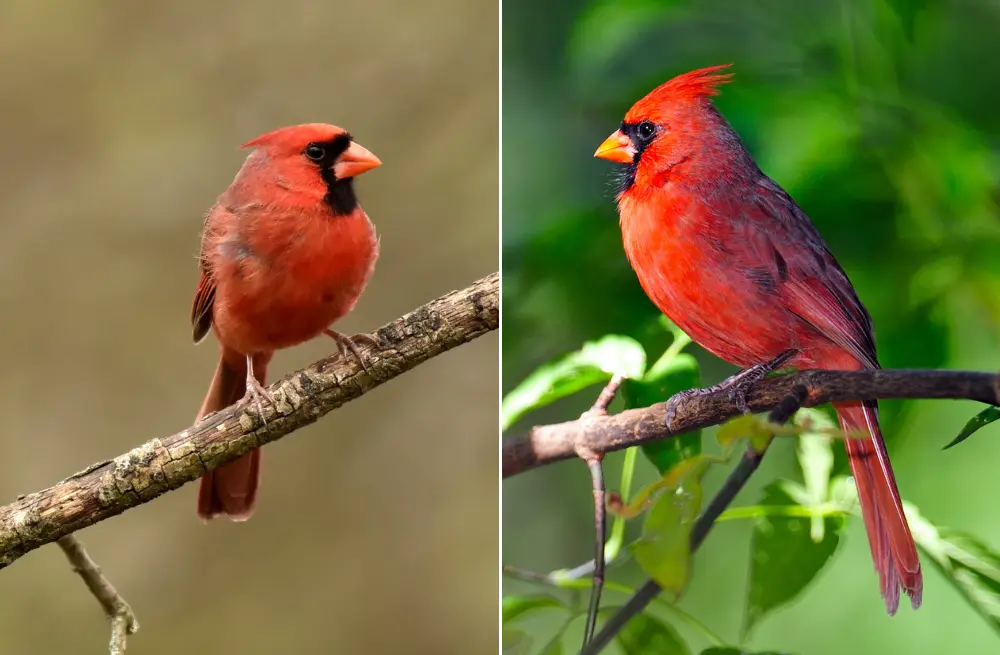7 Small Black Birds with White stripes on Their Wings and Tail
Just like the world around us is full of amazing sights and sounds, the world of birds offers many different kinds, each with its own special look and call.
The small black birds with white stripes on their wings and tail are no exception, commanding attention and curiosity among birdwatchers and enthusiasts.
In this article, we’ll journey into the world of these exquisite creatures, uncovering the stories their feathers tell and the symphonies their calls bring to life.
Unlock A World of Feathered Wonders:
Note: As we embark on this exploration, it’s essential to approach with a heart of respect and conservation. The narratives shared here aim to celebrate the beauty of these birds in the wild, advocating for their protection and appreciation.
Black Phoebe (Sayornis nigricans).
A small black bird with white stripes on its wings and tail is likely the Black Phoebe (Sayornis nigricans). It’s a flycatcher primarily found in the western parts of North America, from the southwestern United States to central South America.
Distinctive Features of the Black Phoebe
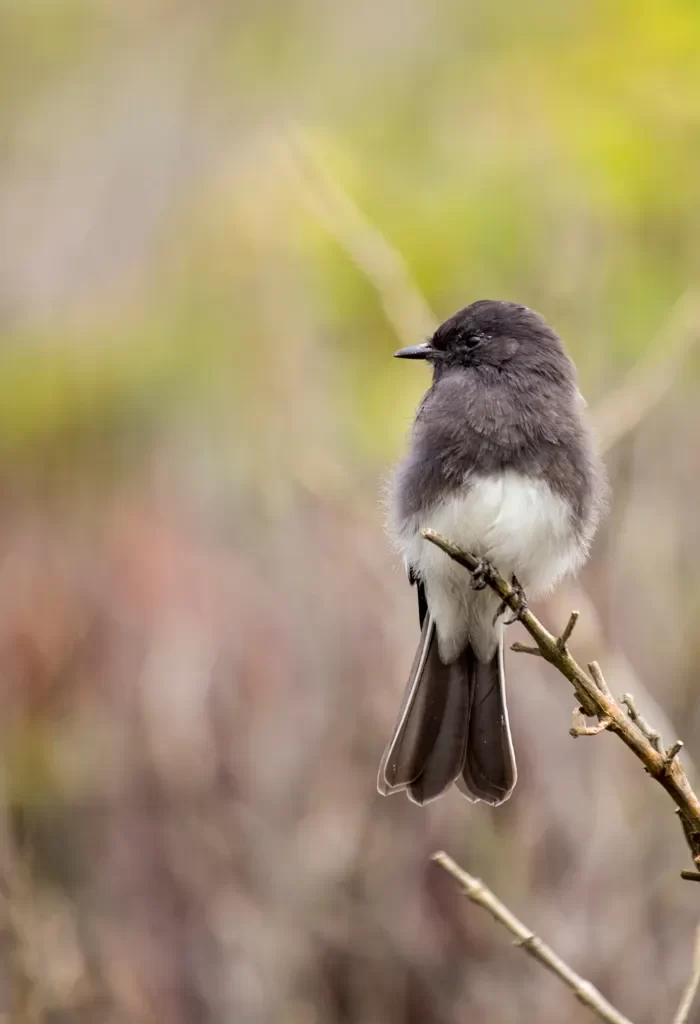
The elegance of the Black Phoebe’s design is underscored by its stark contrast: black plumage juxtaposed with a white belly.
A closer observation reveals white-edged wings, and the tail, too, doesn’t shy away from this color palette, showcasing white on its outer feathers.
Water is the calling card for this species. Whether it’s the tranquil settings of ponds, the ever-flowing streams, or expansive coastal regions, you’ll find the Black Phoebe making itself at home.
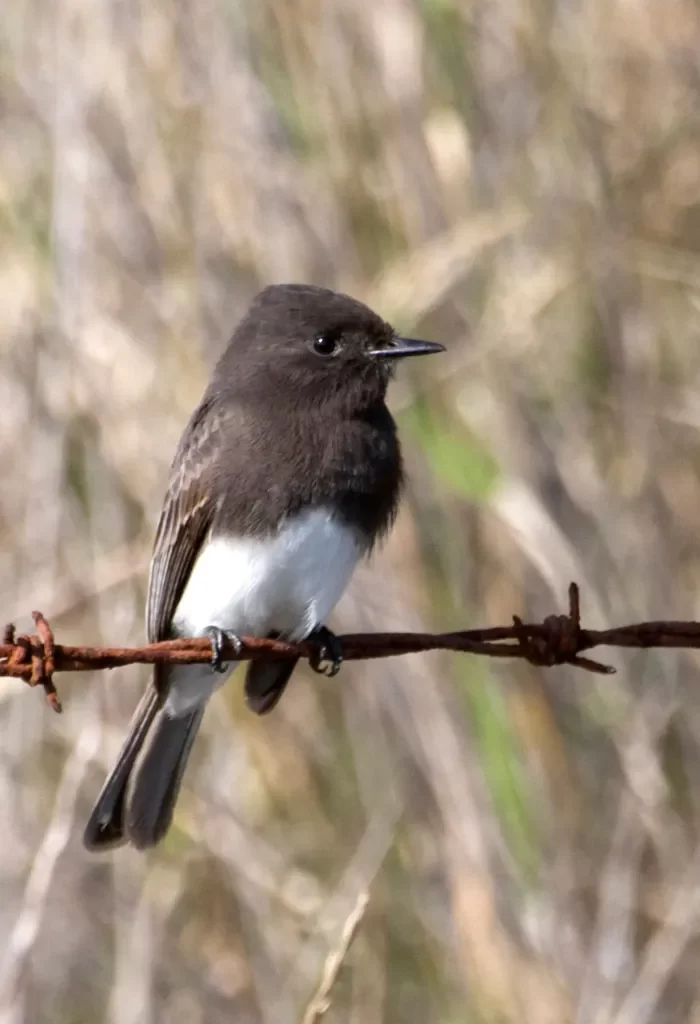
Their favored spots? Low branches or fences, acting as their observational posts.In the avian world, the Black Phoebe stands out as an adept flycatcher.
Its strategy? A short, precise flight from its perch, intercepting insects in mid-air, showcasing nature’s version of precision targeting.
Beyond its visual markers, the Black Phoebe is identifiable by its behavior. Take note of its tail-wagging routine when perched. Couple this with its distinct, sharp “peep” call, and you have a bird that’s hard to misidentify.
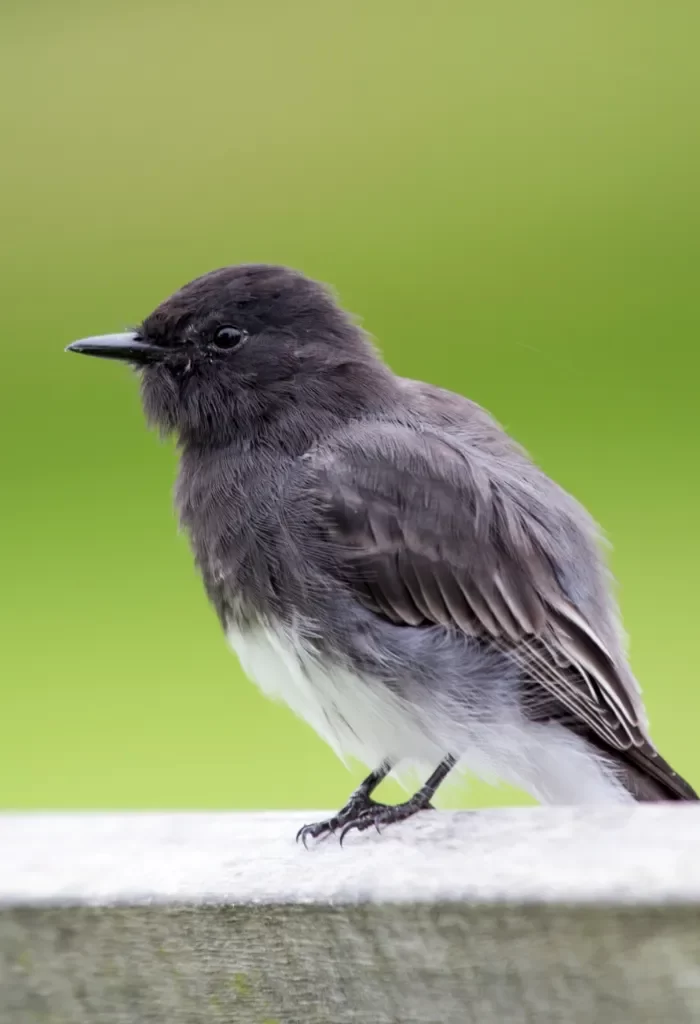
Protection is key for their offspring. You’ll often find their mud nests crafted on vertical surfaces, strategically located under the eaves of buildings or the undersides of bridges.
6 Other Small black birds with White stripes on Their Wings and Tail
Here are five more birds that could fit this description, depending on your location and the exact characteristics you’re observing:
1. Eastern Kingbird (Tyrannus tyrannus):
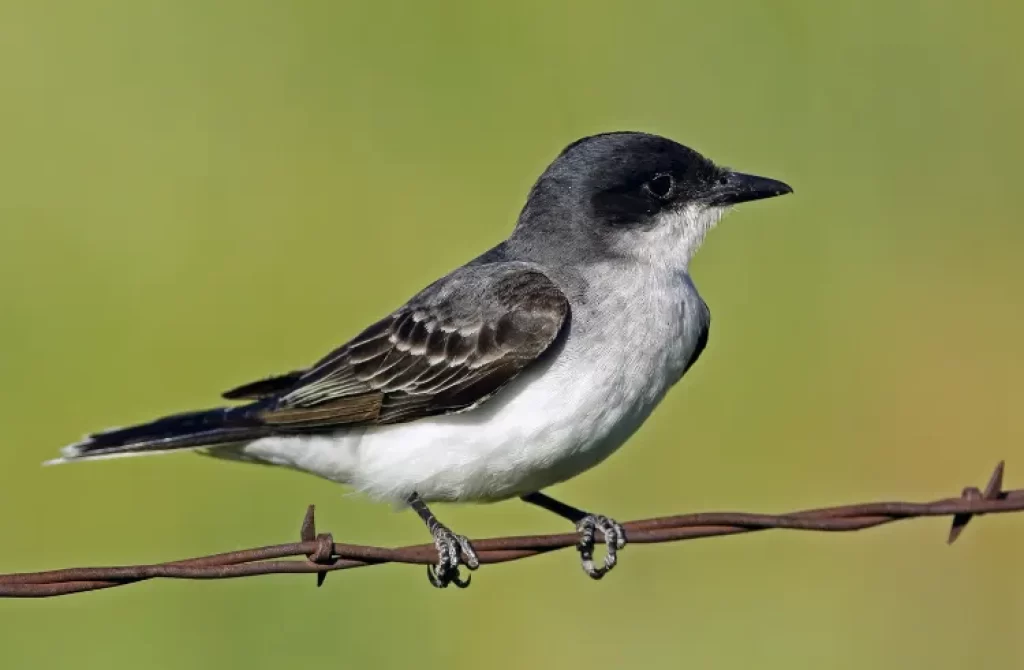
The Eastern Kingbird (Tyrannus tyrannus) is a striking presence in North America. With its predominant black body and head, it’s the white band tail-ending that truly distinguishes it. They’re predominantly seen in open landscapes – think fields, meadows, and wetlands.
However, while their beauty captivates, challenges lie ahead for these birds. The threats aren’t just from predators; environmental conditions play a pivotal role. Prolonged high temperatures, frequently accompanied by drought and wildfires, imperil their food sources and habitats.
These disturbances jeopardize their ability to procreate and raise young, and the repercussions echo throughout seasons. Termed the “carryover effect” by scientists, these challenges can precipitate a decline in yearly young productivity.
This domino effect puts the entire population at risk, and before long, these once-frequent visitors might become rare sights.
2. Loggerhead Shrike (Lanius ludovicianus)
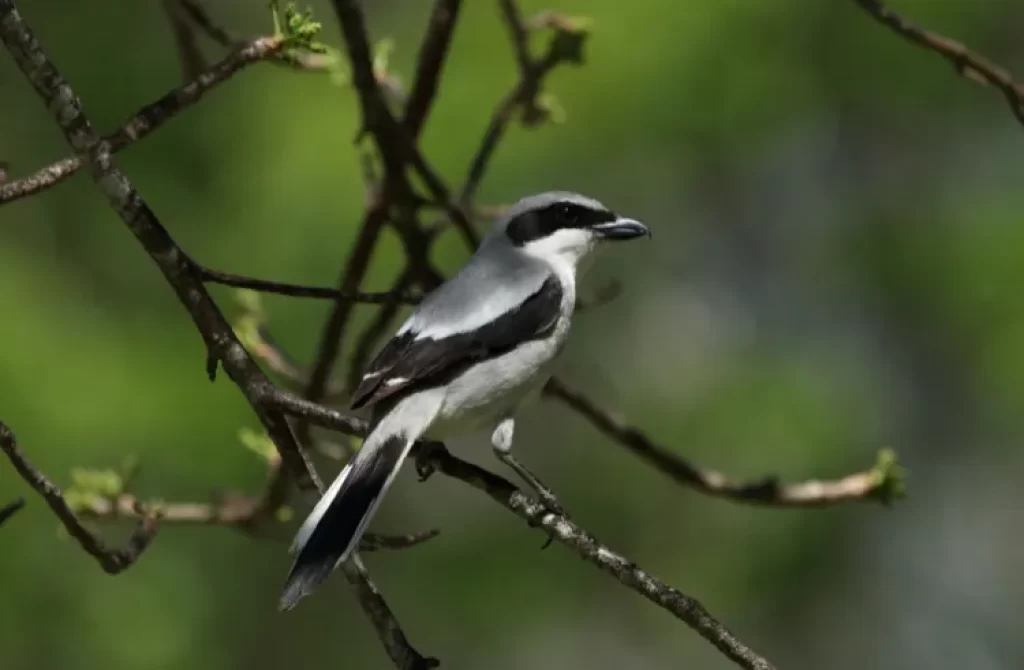
The Loggerhead Shrike (Lanius ludovicianus) stands out not only for its distinctive appearance but also for its stature and behavior.
Spanning a length of about 9 inches (23 cm) and with a wingspan reaching up to 13 inches (33 cm), this songbird is modest in size but mighty in presence.
It’s often dubbed the “masked bandit” of the avian realm, a moniker earned from its defining black mask that contrasts sharply with its gray upper parts and white underbelly.
This stark color scheme is further accentuated by prominent white patches on its black wings and tail. While they’re primarily found in open terrains — ranging from sprawling fields and pastoral expanses to sun-scorched desert regions — they’ve adapted to hunt in these vast areas, often impaling their prey on thorns or barbed wire.
3. Magpie (Pica species):
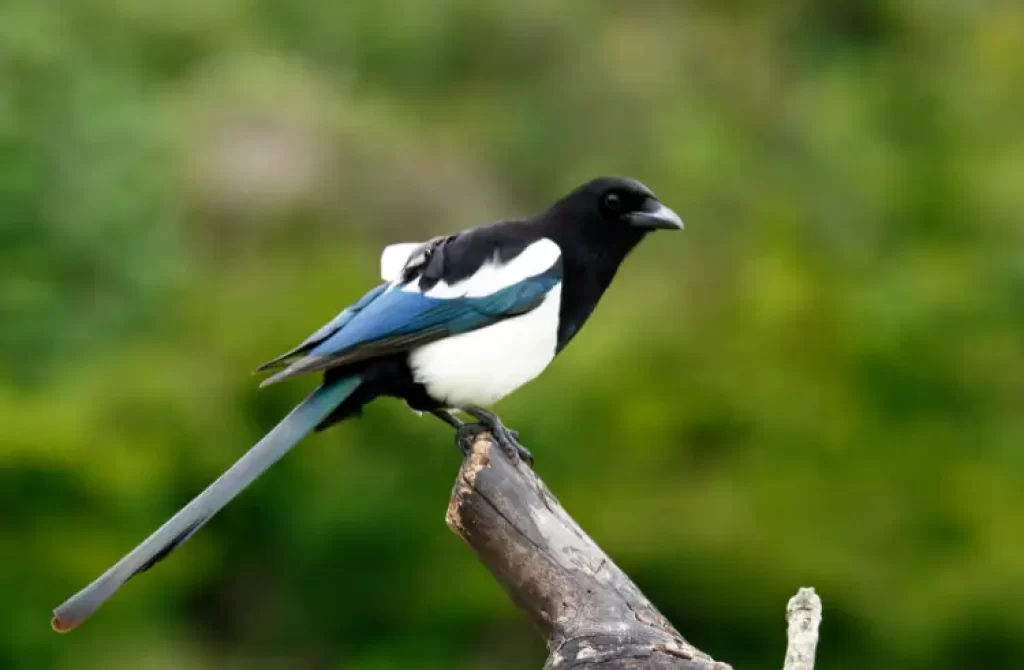
The Magpie, belonging to the Pica genus, is a spectacle of contrasting hues with its black heads and stark white wings and belly. When they soar, their white wing patches are boldly evident. However, the beauty of these birds is under threat.
Urban expansion is rapidly encroaching upon their native habitats of open woodlands, grasslands, and even urban fringes.
As these habitats shrink or get fragmented, Magpies face challenges in sourcing food and finding suitable nesting grounds.
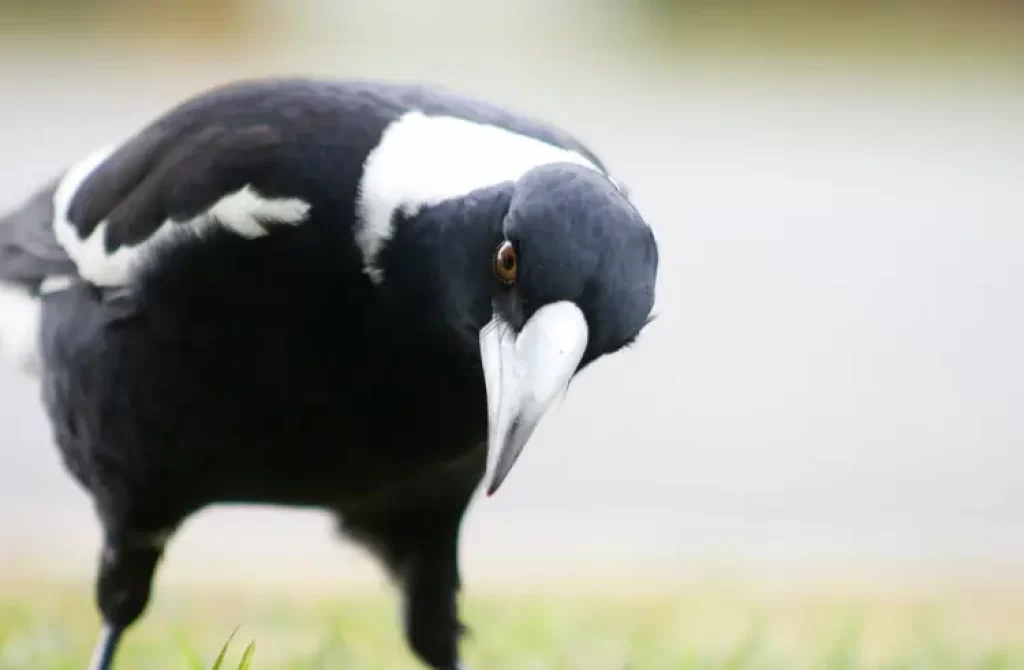
This not only affects their immediate survival but can also impact their reproductive success. A reduced natural habitat can mean fewer offspring in subsequent generations. Scientists refer to such repercussions across generations as the “carryover effect”.
Over prolonged periods, this can lead to a significant decline in Magpie populations.
And as their numbers dwindle, the once familiar sight of these striking birds in our surroundings becomes rarer, reminding us of the delicate balance between nature and human encroachment.
4. European Starling (Sturnus vulgaris)
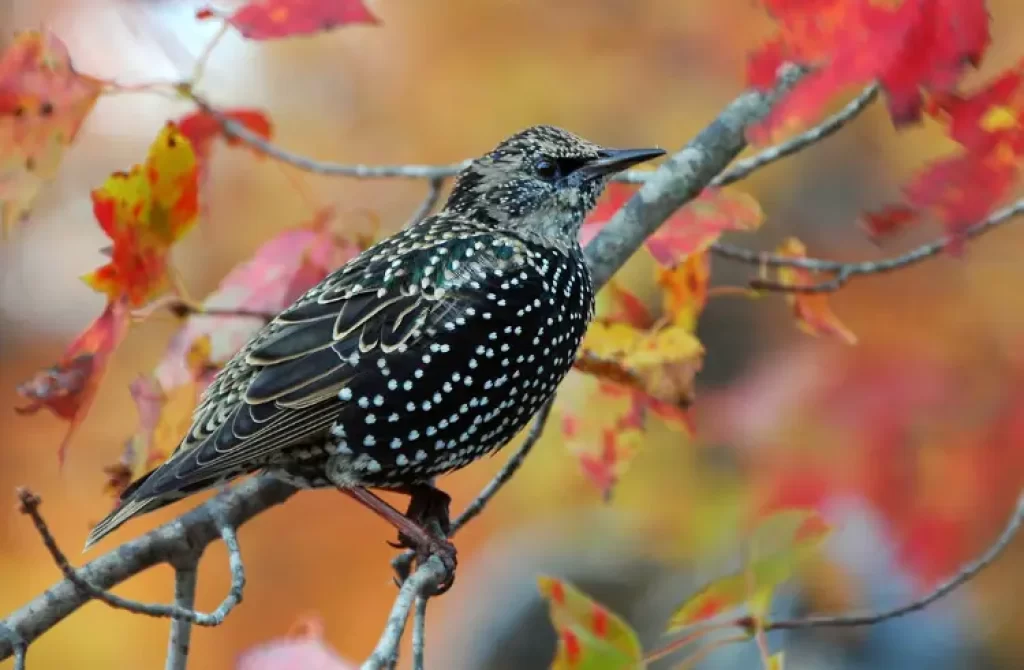
The European Starling (Sturnus vulgaris), though often mistaken as merely black from afar, holds an impressive secret in its feathers. Upon an intimate look, one can spot the mesmerizing iridescence that paints their plumage, with colors varying from gleaming greens to shimmering purples.
Especially striking are the wing feathers which, under the right light conditions, reveal distinct white tips that can measure up to 0.2 inches in length.
Native to a vast array of habitats, these birds have displayed adaptability by thriving in locations from dense forests, spanning thousands of acres, to bustling urban spaces covering a mere 10 square miles.
However, recent studies have highlighted concerns; urban expansion has led to a 12% reduction in their natural habitats over the past decade.
This environmental shift poses challenges, not only in immediate survival but also in breeding, with a noted 8% decrease in their annual offspring.
If current trends persist, the echoing calls of the European Starling might become less frequent, prompting the need for sustainable coexistence.
5. White-winged Black Tern (Chlidonias leucopterus):
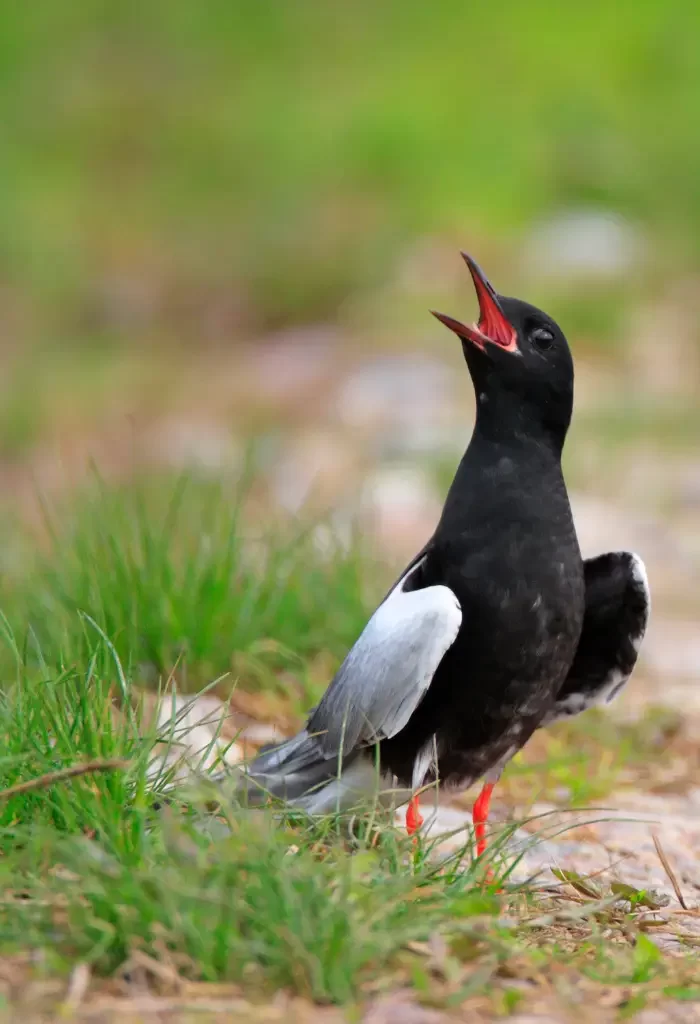
The White-winged Black Tern (Chlidonias leucopterus) offers an illustrative lesson in contrasts. At a distance, their predominant black hue during the breeding season can be a stark juxtaposition to their vivid white wings, which stretch an average of 24-27 inches across.
These wings are not merely aesthetic; they play a crucial role in their aerial maneuvers above wetlands, lakes, and coastal areas spanning regions as vast as 50,000 square miles. Within these habitats, water clarity and quality become paramount.
Recent surveys indicate a concerning 15% decline in pristine wetland regions over the last two decades, a situation exacerbated by pollutants and climate change-induced alterations.
6. Common Nighthawk (Chordeiles minor)
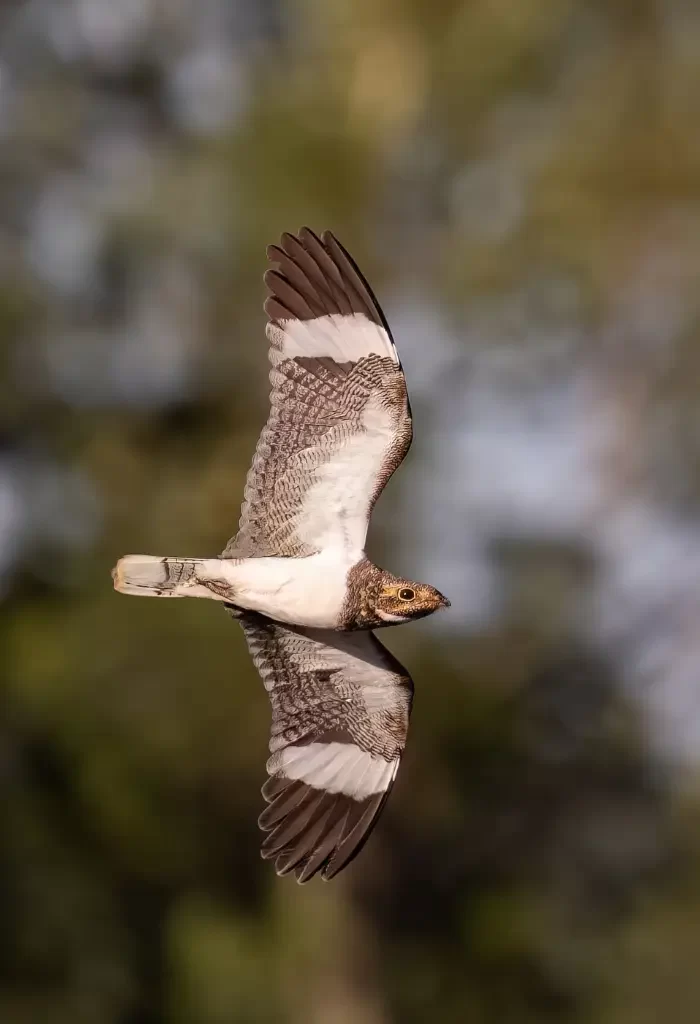
The Common Nighthawk (Chordeiles minor) is an intriguing bird species, drawing attention not only for its nocturnal habits but also for its captivating flight patterns.
Often mistaken for bats due to their evening aerial acrobatics, these birds play a role in controlling insect populations, primarily feeding on flying insects.
Key Characteristics of the Common Nighthawk
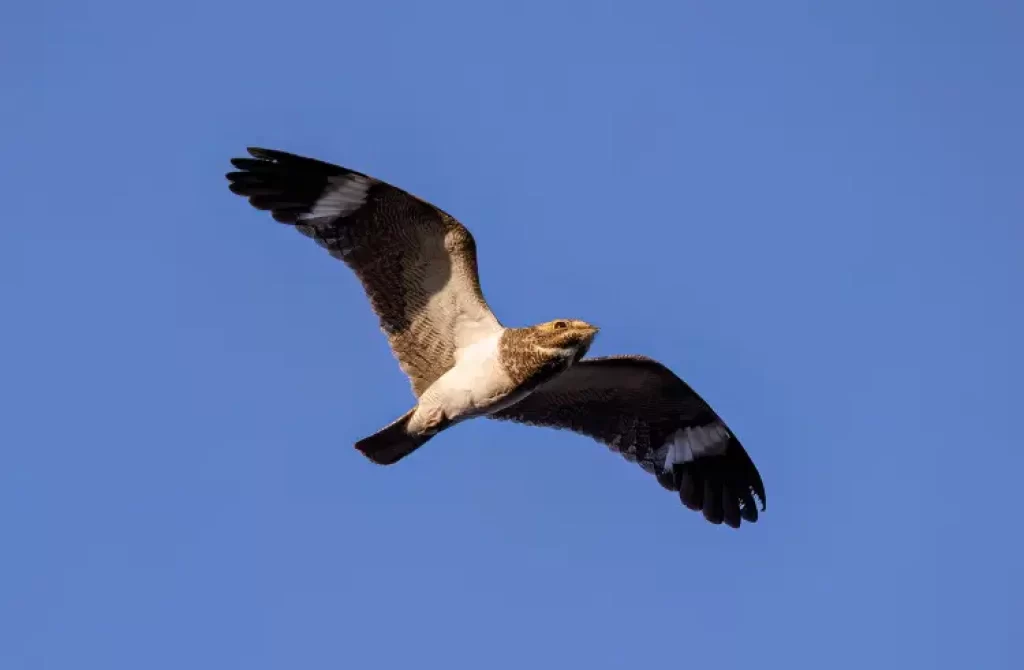
- Appearance: Not exactly fitting the description of a “small black bird with white stripes on wings and tail,” the Common Nighthawk is characterized by its long wings and short bill. Mottled with brown, gray, and black, it has a white throat patch and conspicuous white wing bars, noticeable during flight.
- Size: Averaging a wingspan of 60-65 cm and a length of about 24-25 cm, it’s a medium-sized bird, agile in the air.
- Habitat: The habitats of the Common Nighthawk are varied. They can be spotted in open woodlands, grasslands, urban areas, and even desert environments. Their preference for open spaces allows them to easily spot and capture flying insects.
- Call: Their vocalizations are distinctive – a sharp “peent” call can often be heard during their evening flights.
Conservation and the Common Nighthawk:
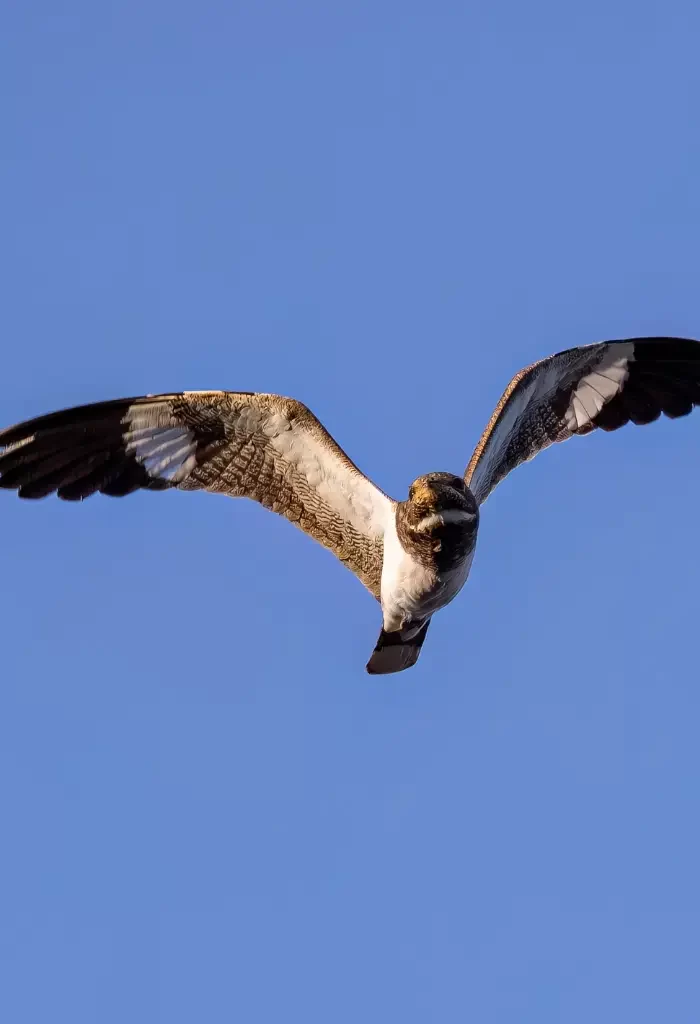
It’s worth noting that even though they might not be the quintessential “small black bird with white stripes on wings and tail,” the Common Nighthawk, like many avian species, faces challenges.
Losses in their natural habitat and a decline in food sources, primarily attributed to the use of pesticides, impact their numbers.
These birds, like many others, serve as indicators of environmental health, reflecting the changes in ecosystems that might not be readily apparent to us.
Supporting efforts to minimize pesticide use and maintaining their natural habitats can ensure these nocturnal wonders continue their evening dances for years to come.
Remember, the exact bird you’re observing could vary based on your geographical location and the specific details of the bird in question. If you’re keen on identifying the exact species, taking a photo and using a bird identification app or consulting a local ornithologist or birding group can be helpful.





